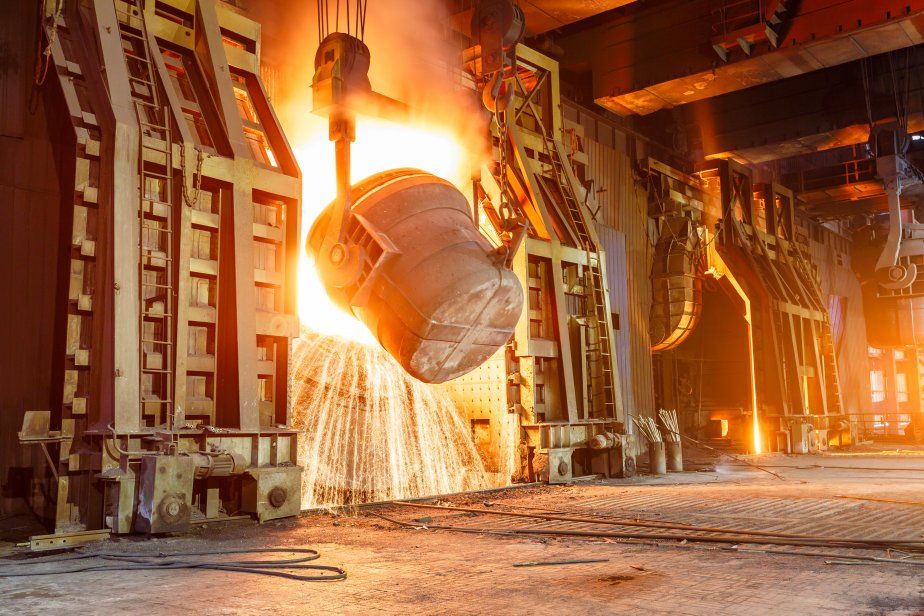Steel price forecast: Third-party price targets
Steel is trading at $797 per short tonne as of 11:35 UTC on 16 September 2025 (Trading Economics, 16 September 2025).
Price resilience comes amid rising Chinese crude-steel production – output climbed 7.8% year-on-year in early September after mills resumed activity following environmental curbs – while inventories of five major steel products rose to their highest level in four months and iron ore futures slipped 0.5% in early Asian trade (Reuters, 10 September 2025).
Steel price forecast 2025-2030: Analyst price targets
S&P Global Commodity Insights (annual outlook)
S&P Global Commodity Insights projects the average annual Midwest HRC price to fall to $748 per short tonne in 2025, down 3.5% from the estimated 2024 level of $778. Analyst Ali Oktay notes weak demand and new capacity ramp-ups could cap prices amid faltering automotive demand (S&P Global Commodity Insights, 13 January 2025).
Steelonthenet.com (global price projections)
According to Steelonthenet.com, world steel prices are expected to remain in a cyclical downturn, reaching a trough in mid-2025 before recovering toward the next peak in 2027. The analysis highlights average cycle intervals of 3-4 years and points to further falls from excess capacity and below-trend demand (Steelonthenet.com, 16 September 2025).
J.P. Morgan (U.S. price forecasts)
J.P. Morgan forecasts hot-rolled coil at $900 per short tonne and rebar at $785 in 2025, reflecting a 2% downward revision after faster-than-expected demand erosion. The bank cites tariff-driven slowing in stainless-steel demand growth to 5.3% year-on-year and weaker mill utilisation prompting a 7% reduction in scrap forecasts (J.P. Morgan, 1 May 2025).
OECD (annual Steel Outlook)
The OECD’s 2025 Steel Outlook warns that planned capacity additions of up to 165m tonnes between 2025-27 could deepen oversupply, pushing utilisation below 70% and keeping prices under pressure. The report notes uneven regional demand – declines in China and OECD markets against stronger growth in ASEAN and MENA – and trade distortions from subsidies and higher Chinese exports (OECD, 27 May 2025).
Predictions and third-party forecasts are frequently inaccurate, as they can’t account for unforeseen market developments. Past performance or forecasts are not reliable indicators of future results.
Steel price: Technical overview
On the daily chart, HRC steel futures trade at $810 as of 11:35 UTC on 16 September 2025, hovering near the 10-day moving averages around $805-$808, while the 20/50/100/200-DMAs form a wider band at 812 / 840 / 861 / 831. The shorter-term 10-day averages show minor strength, contrasting with the medium- and long-term decline implied by the 20- to 200-day band .
Momentum is neutral with a 14-day RSI at 42 and an ADX of 46, showing neither a strong trend nor oversold conditions. The MACD signals a buy, but other oscillators, including the Commodity Channel Index and Stochastic RSI, remain neutral. Resistance is at the 813 pivot; a close above this level would bring 878 into focus. Initial support sits near 808, followed by the 100/200-day shelf at 831-844. A break lower could open the way to 759 (TradingView, 16 September 2025).
This is technical analysis for informational purposes only and does not constitute financial advice or a recommendation to buy or sell any instrument.
FAQ
Is Steel a good investment?
Whether steel exposure suits a portfolio depends on an investor’s timeframe and risk tolerance. As of September 2025, third-party analyst forecasts show mixed views, with targets ranging from $748 to $888 per tonne through 2025. Key drivers include cyclical demand patterns, global capacity utilisation, and trade policy. Steel performance often correlates with infrastructure spending, manufacturing activity, and wider economic cycles.
Could Steel go up or down?
Steel prices respond to supply-demand conditions, raw material costs, trade measures, and macroeconomic trends. Potential upward drivers include infrastructure investment, manufacturing growth, or supply constraints, while downward pressures could come from persistent overcapacity, weaker industrial demand, or tariff-related trade frictions.
Should I invest in Steel?
Trading commodity CFDs gives exposure to price movements without physical delivery or storage. CFDs are traded on margin, and leverage higher than 1:1 increases both your gains and your losses. Direct investment in steel-related equities or ETFs can align with longer-term sector trading strategies. The choice should fit trading objectives, risk appetite and market outlook. Consider volatility, leverage, geopolitical risks, trade policy impacts and links with broader economic trends.